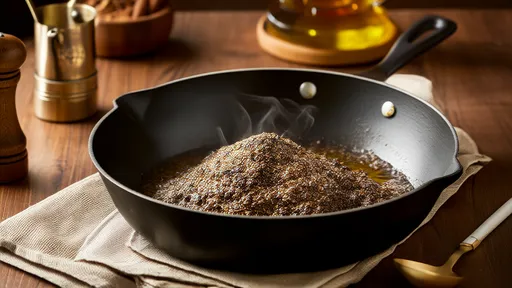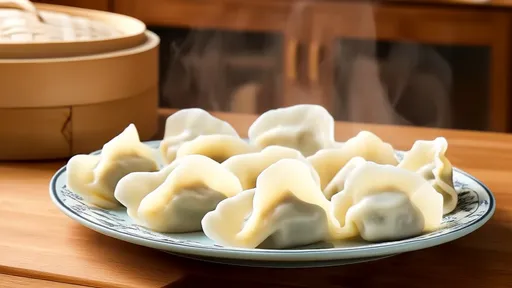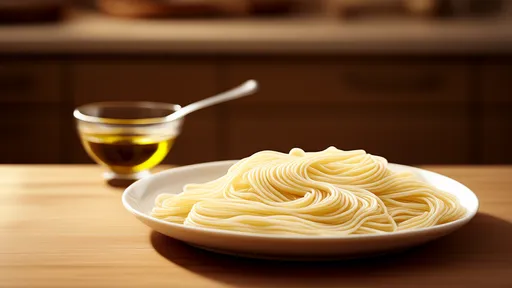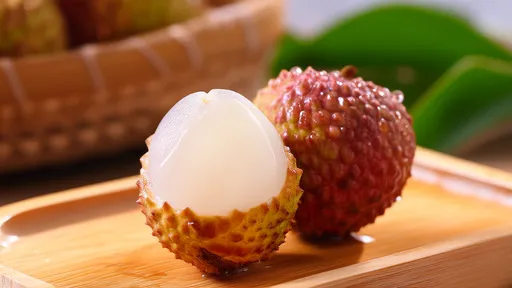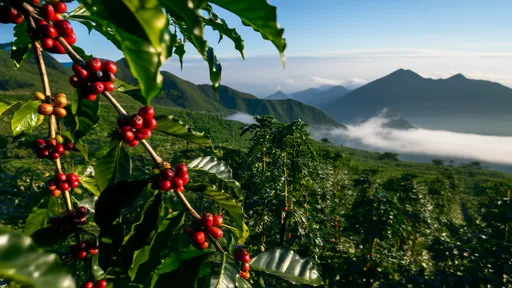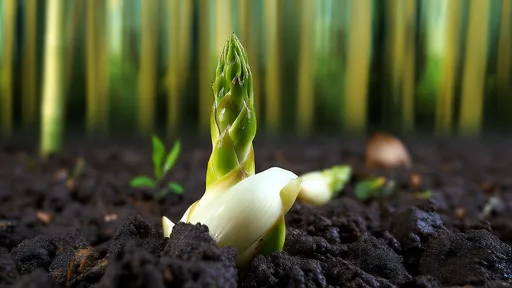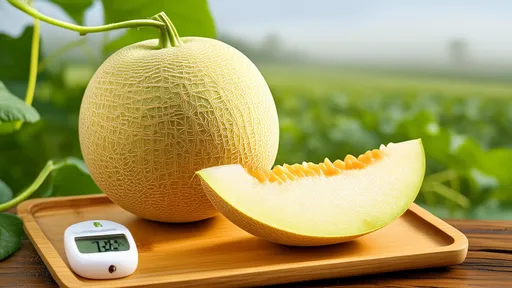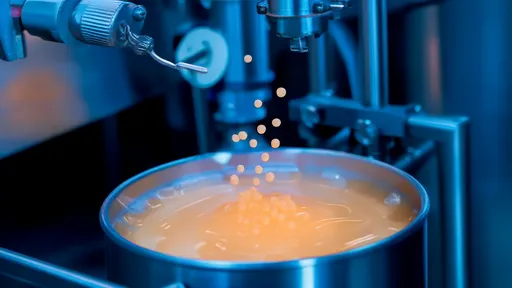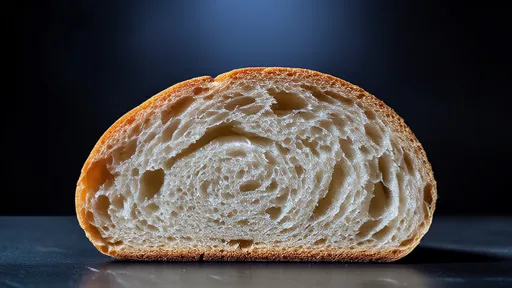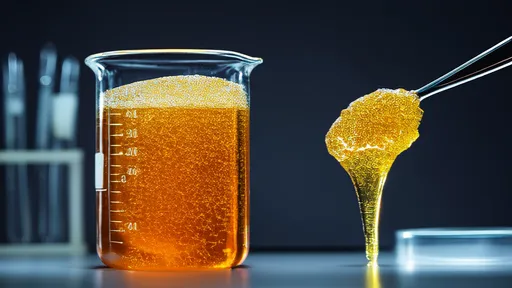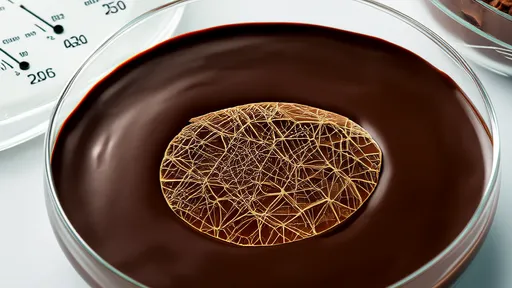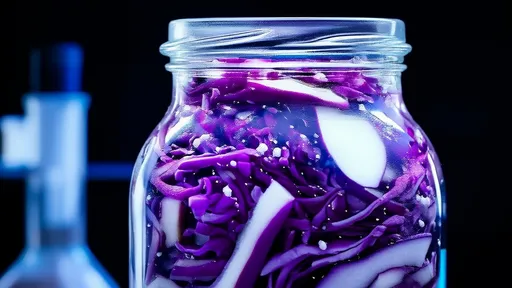The science behind pickling vegetables has fascinated food chemists and home cooks alike for centuries. While the process may seem straightforward – submerging vegetables in brine – the molecular dance occurring within each cell reveals a complex interplay of chemistry and physics. Recent advances in sodium ion detection techniques have allowed researchers to map the distribution of salt throughout pickled vegetables with unprecedented precision, shedding new light on this ancient preservation method.
When vegetables are immersed in brine, sodium chloride begins its gradual invasion of the plant tissues. The cell walls, designed by nature to protect the vegetable's structure, become semi-permeable membranes under the salt's influence. This osmotic process creates a fascinating microscopic landscape where sodium ions migrate at varying rates depending on cellular structure, vegetable type, and brine concentration. Modern detection methods now allow us to visualize this migration pattern in three dimensions, revealing surprising variations in salt penetration that challenge traditional pickling assumptions.
The journey of sodium ions through vegetable tissue follows neither a uniform path nor a consistent timeline. Advanced imaging shows salt fronts advancing rapidly through some cellular structures while encountering stubborn resistance in others. These detection techniques employ fluorescent markers and specialized microscopy to track sodium's progress hour by hour. What emerges is a detailed map of salt distribution that explains why some pickles develop flavor gradients – intensely salty at the surface while retaining subtle sweetness at the core during early stages of fermentation.
Traditional pickling wisdom suggested salt distribution would equalize given sufficient time. However, cutting-edge detection reveals persistent sodium gradients even in long-fermented products. The cellular composition of different vegetables creates what researchers now call "salt highways" – pathways where sodium ions move with particular efficiency. In cucumbers, for instance, the vascular bundles that once transported water and nutrients become privileged routes for salt penetration. This discovery helps explain why stem ends often taste saltier than blossom ends in whole pickles.
Temperature's role in sodium ion distribution has been dramatically clarified by recent studies. While warmer brines accelerate overall penetration, they don't necessarily create more even distribution. Detection methods show that heat can actually exaggerate salt gradients by causing rapid surface absorption that outpaces deeper tissue penetration. This finding has significant implications for commercial pickle producers who traditionally used warmer brines to shorten processing time, potentially at the cost of product consistency.
The relationship between sodium ion distribution and texture development presents another fascinating dimension. Areas of higher sodium concentration correlate with more dramatic breakdown of pectin, the structural carbohydrate that gives vegetables their crispness. Advanced detection methods allow researchers to precisely match sodium concentration maps with texture analysis measurements. This explains why some pickles develop uneven textures – firm in some areas while mushy in others – a phenomenon that puzzled food scientists for decades.
Modern sodium detection techniques have also revealed unexpected patterns in different vegetable varieties. Heirloom cucumber varieties, for instance, show more irregular salt distribution patterns than modern hybrid cultivars bred for uniform texture. This suggests that decades of selective breeding for appearance and shipping durability may have inadvertently created vegetables with more predictable pickling behavior. Such findings could lead to new breeding programs specifically optimized for superior fermentation characteristics.
The cutting edge of sodium detection now extends beyond simple distribution mapping to tracking ion movement in real time. Using specialized equipment originally developed for medical research, scientists can now observe the dynamic process of salt penetration as it happens. These observations confirm that salt movement isn't continuous but occurs in pulses, possibly related to cellular respiration cycles in the vegetable tissue. This pulsatile penetration pattern may hold the key to developing brining techniques that achieve more even salt distribution.
Commercial applications of these detection methods are already transforming industrial pickling operations. One major producer reported a 30% reduction in brine waste after adjusting their process based on sodium distribution maps. Another has developed variable brining times for different cucumber sizes based on precise penetration rate data. Perhaps most excitingly, some artisan producers are using these insights to create intentionally non-uniform pickles with complex flavor profiles that change as you eat them.
As detection technology continues to advance, researchers anticipate being able to track not just sodium ions but all major mineral components in the brining process. This could lead to customized mineral blends that optimize flavor development, texture, and preservation for specific vegetables. The humble pickle, it seems, still has secrets to reveal, and modern science is providing the tools to uncover them one sodium ion at a time.
The art of unlocking the full potential of spices lies in a time-honored technique: dry-roasting, crushing, and coaxing out their essential oils. This ancient method, passed down through generations of culinary masters, transforms ordinary spices into aromatic powerhouses that elevate dishes to extraordinary heights. The process may seem simple at first glance, but mastering it requires patience, precision, and an understanding of how heat interacts with different spice varieties.
For many home cooks and professional chefs, peeling and cutting yams can be an unexpectedly unpleasant experience. The vegetable, known for its nutritional benefits and culinary versatility, has a notorious side effect – it can leave your hands unbearably itchy. This common kitchen woe has led to numerous home remedies and old wives' tales, but one surprising solution has emerged from modern technology: the microwave.
The art of making dumplings is a cherished tradition in many cultures, particularly in Chinese cuisine. While the filling often steals the spotlight, the dough wrapper plays an equally crucial role in ensuring the dumplings hold together during cooking. One of the most effective yet underrated techniques for preventing dumpling wrappers from tearing is incorporating egg whites into the dough. This method leverages the science of proteins to create a more resilient and elastic wrapper, capable of withstanding the rigors of boiling or steaming without falling apart.
In kitchens around the world, cooks face a common nemesis when preparing pasta: sticky noodles that clump together into an unappetizing mass. While many swear by the traditional method of rinsing cooked pasta with cold water to prevent sticking, a growing number of culinary experts argue that tossing freshly boiled noodles with olive oil proves far more effective. This technique not only preserves the pasta's ideal texture but also enhances its flavor profile in ways cold water simply cannot match.
Guangdong lychee, a jewel of southern China's fruit basket, has long been celebrated for its succulent flesh and floral aroma. Beyond its irresistible taste, recent research has uncovered a hidden treasure within its vibrant red peel—polyphenols with remarkable antioxidant properties. These compounds are quietly revolutionizing our understanding of how this tropical fruit may contribute to human health far beyond basic nutrition.
The high-altitude coffee farms of Yunnan Province have long been celebrated for producing beans with a distinctive flavor profile. Among the many factors influencing taste, altitude plays a particularly crucial role, especially when it comes to acidity. Unlike the bright, sharp acidity often associated with African coffees, Yunnan’s beans exhibit a more nuanced relationship between elevation and tartness—one that defies simple expectations.
The tender crunch of Zhejiang bamboo shoots has long captivated gourmets and scientists alike, their delicate texture standing as a testament to nature's perfect engineering. While chefs praise their culinary versatility, researchers have uncovered a fascinating cellular secret behind their remarkable freshness – turgor pressure. This biological phenomenon, often overlooked in discussions of vegetable quality, holds the key to understanding why these spring delicacies from China's eastern province maintain their youthful crispness long after harvest.
The Hami melon, a jewel of Xinjiang's agricultural bounty, owes its legendary sweetness to a climatic phenomenon as ancient as the Silk Road itself. Nestled in the arid embrace of China's northwest, this golden-fleshed fruit has thrived for centuries under skies that scorch by day and chill by night. What appears as hardship to most crops becomes the secret alchemy transforming ordinary melons into saccharine masterpieces.
The vast fields of Northeast China, stretching across latitudes from 40°N to 50°N, have long been celebrated as the heartland of soybean production. Among the many factors influencing soybean quality, protein content stands out as a critical metric, not just for nutritional value but also for industrial applications. Recent studies have unveiled a fascinating pattern: the protein content in Northeast soybeans exhibits significant variation along latitudinal gradients. This discovery has sparked renewed interest in understanding how geography shapes the very fabric of this agricultural staple.
The process of homogenization in ice cream mix preparation plays a pivotal role in achieving the desired texture, stability, and mouthfeel of the final product. At the heart of this process lies the principle of fat emulsification, where milk fat globules are broken down into smaller, more uniform particles. This not only enhances the emulsion's stability but also ensures a smoother consistency in the ice cream. The science behind homogenization parameters is both intricate and fascinating, as it directly influences the quality of the end product.
The phenomenon of bread staling has puzzled bakers and food scientists for generations. While most consumers associate staleness with dryness, the underlying mechanisms involve complex interactions between starch retrogradation and water migration within the bread matrix. This intricate dance between moisture and crystalline structures ultimately determines whether your morning toast will delight or disappoint.
The formation of rock sugar crystals is a fascinating interplay of chemistry and physics, where the delicate balance of supersaturation dictates the birth and growth of crystalline structures. At its core, this process hinges on the creation of nucleation sites—tiny clusters of molecules that serve as the foundation for larger crystals. The journey from syrup to shimmering rock sugar is anything but straightforward, and understanding the factors that influence nucleation can unlock greater control over crystal size, clarity, and yield.
The art of chocolate tempering is a delicate dance of temperature control, one that hinges on the precise crystallization of cocoa butter. This process is not merely a technical step in chocolate production; it is the very heart of what gives chocolate its signature snap, glossy sheen, and melt-in-the-mouth texture. Without proper tempering, chocolate can appear dull, develop a grainy texture, or fail to release cleanly from molds. The secret lies in understanding how cocoa butter behaves under varying thermal conditions.
The science behind pickling vegetables has fascinated food chemists and home cooks alike for centuries. While the process may seem straightforward – submerging vegetables in brine – the molecular dance occurring within each cell reveals a complex interplay of chemistry and physics. Recent advances in sodium ion detection techniques have allowed researchers to map the distribution of salt throughout pickled vegetables with unprecedented precision, shedding new light on this ancient preservation method.
The phenomenon of "wine legs" or "tears of wine" has captivated drinkers and scientists alike for centuries. When a glass of wine or spirit is swirled, droplets form on the inside of the glass, creating mesmerizing streaks that slowly trickle back down. This elegant display isn’t just a sign of a good drink—it’s a fascinating interplay of fluid dynamics, surface tension, and evaporation.
